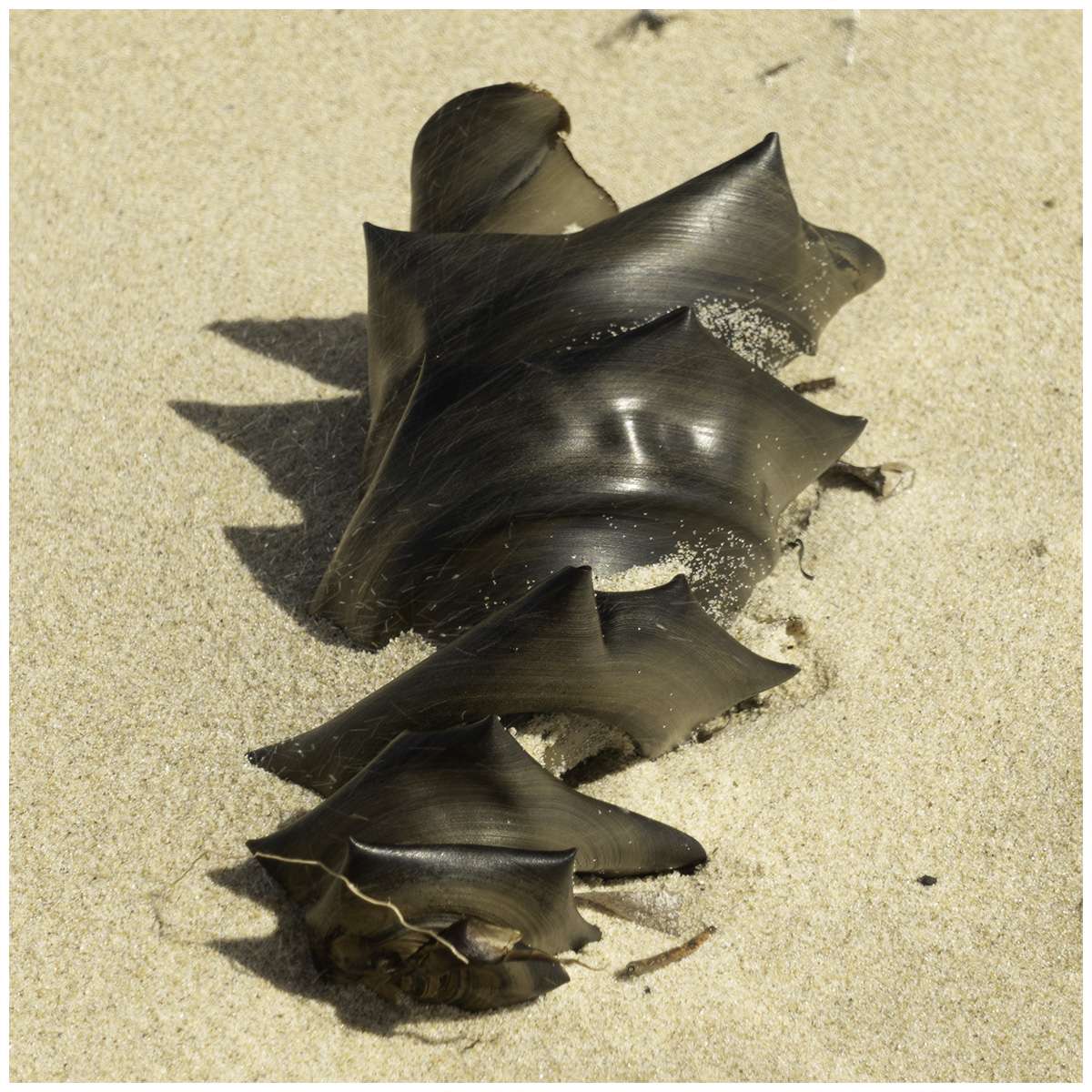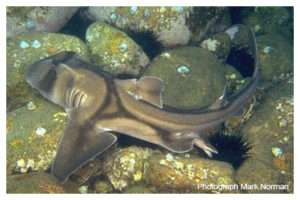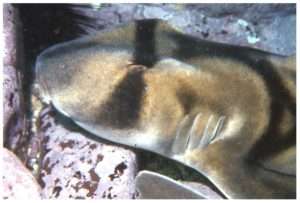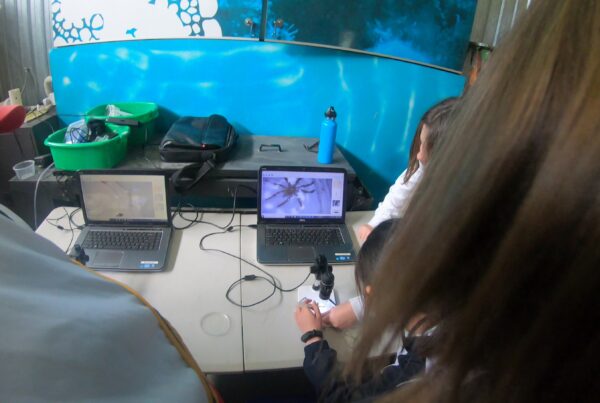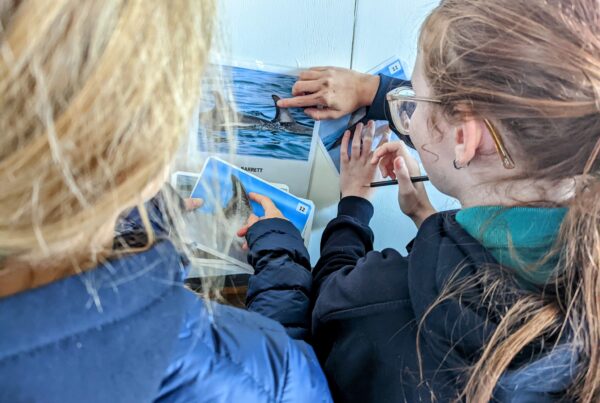Many people can correctly identify this as a Port Jackson shark egg, but what do you know about this species of shark?
The Port Jackson shark is a common shark, found across southern Australia from Western Australia to southern Queensland, including Tasmania. They are easy to identify as they have a different look to other sharks. Instead of the streamlined pointed head, we associate with sharks, the Port Jackson shark has a blunt, box-like head with raised crests above each eye. Their grey-brown body has distinctive black banding across the eyes and along its back. The two triangular dorsal fins have a spine along the front edge which are sharp in juveniles but tend to be blunter in adults. While there are records of Port Jackson sharks reaching 1.65 metres in length the majority are smaller. Males grow to about 75 centimeters long while females are a little bigger at 95 centimetres.
They belong to a Family of sharks called Heterodontidae, a word that describes their teeth. In Greek, hetero means different and dont means teeth, they have two different types of teeth. In the front of their jaw are small, pointed teeth, while at the back are broad flat teeth used to grind their diet of snails, sea urchins, and crustaceans. Juvenile Port Jackson sharks lack grinding teeth, instead have uniform fine teeth which are ideal for their diet of soft-bodied animals. As the young sharks mature the rear teeth elongate and flatten allowing them to eat harder prey. The grinding teeth are concentrated in the corners of the jaw where they have maximum crushing power.
The eight species of sharks in this Family can breathe and eat at the same time, something other sharks are unable to do. They pump water into their first gill slit, then the water passes over their gills and out the other gill slits. This means that the sharks do not have to move to breathe, so they can remain motionless for long periods, resting on the seafloor.
We are familiar with migrating sea animals such as whales and birds, but did you know that the Port Jackson shark also migrates? Studies in New South Wales have recorded sharks travelling over 600 kilometres from Jarvis Bay to the waters of Bass Strait. The sharks return to Jarvis Bay the following year to breed with the females returning to the same reefs where they were born. The males tend to move between locations rather than showing the same homing behaviour as the females.
Watch Port Jackson sharks swim and rest in rocky caves. One even tries to nibble a diver’s glove. YouTube Video: https://www.youtube.com/watch?v=JK-5VtIuC0g
If you would like to learn more about the huge diversity of life that can be found along our coasts and shorelines please contact Education Director Mandy Robertson on education@dolphinresearch.org.au

